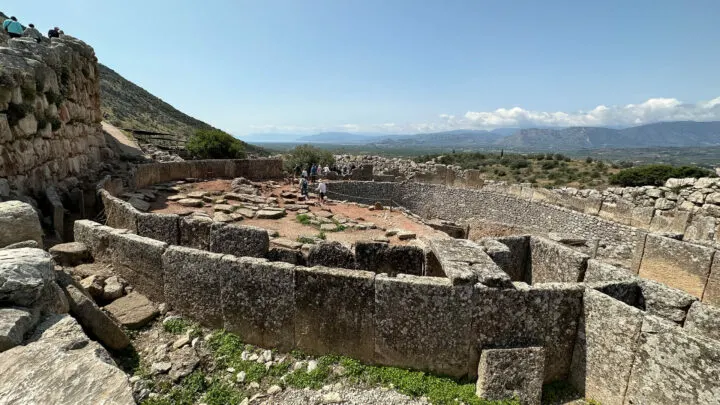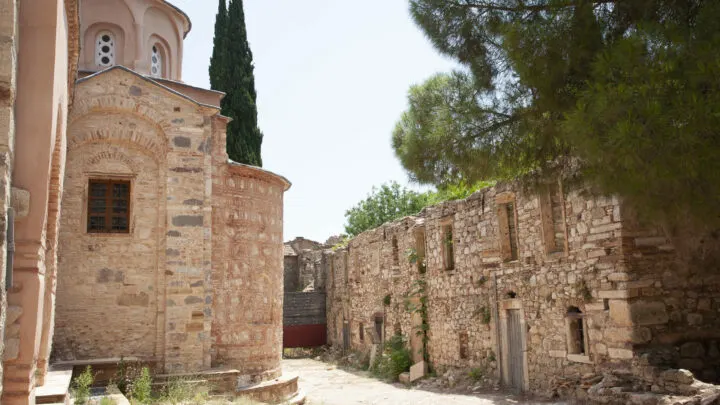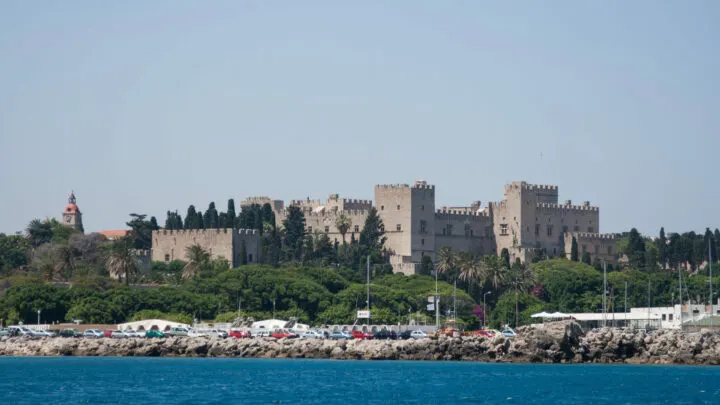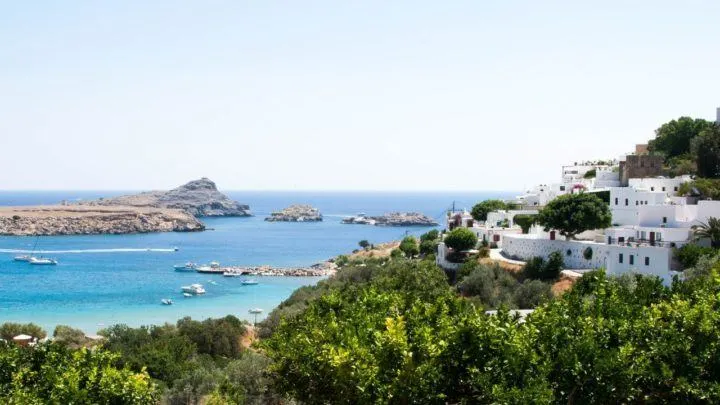Is a trip to Greece in your future? If so, add the Acropolis Museum and the National Archaeological Museum to your must-see list. They’re the best museums in Athens and display amazing Greek artifacts.
Greece is a great country with friendly people, wonderful food, and amazing things to see and experience. This part of the world has been occupied for at least eight millennia, so it has a lot of history and a lot of artifacts. You can see and learn about them by visiting the two best museums in Athens: The National Archaeological Museum and the Acropolis Museum.
The National Archaeological Museum is the largest museum in Greece and is one of the most important museums in the world. It represents all of Greek history and has artifacts all the way back to neolithic times. The museum is housed in a huge 19th century neoclassical building.
The Acropolis Museum was created to protect and to display the marble statues and other artifacts from the Acropolis. Part of this was to rescue the marbles still on the Parthenon and other Acropolis temples and part of it was to establish that Greece wanted its plundered antiquities back and now has a secure and first-rate facility to display them.
Here’s what’s in this post:
- Acropolis Museum: description, location, ways to get there
- National Archaeological Museum: description, location, ways to get there
- Best time to go
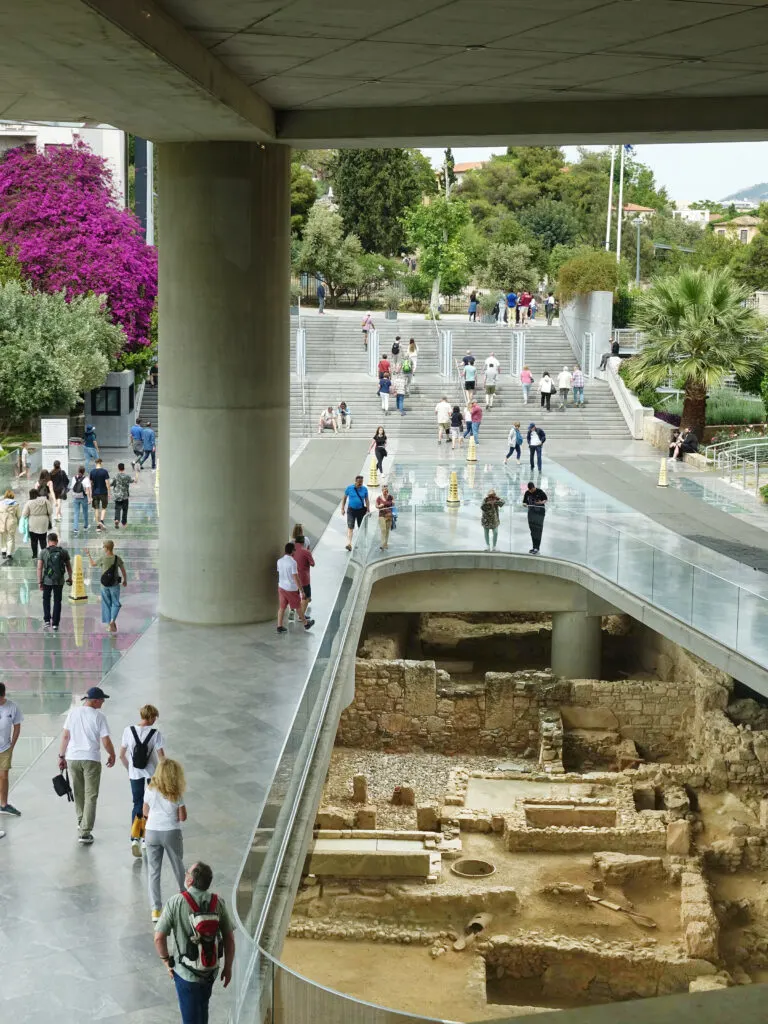
The Acropolis Museum
Earthquakes, thievery, weather, and ravages of time have taken their toll on the incredible marble statuary and frescoes that adorned the Parthenon and other temples on the Acropolis. To protect them from further loss and damage, Greece created the huge, beautiful new Acropolis Museum to display them. The remaining marbles on the Acropolis were carefully removed and are now on display in the museum.
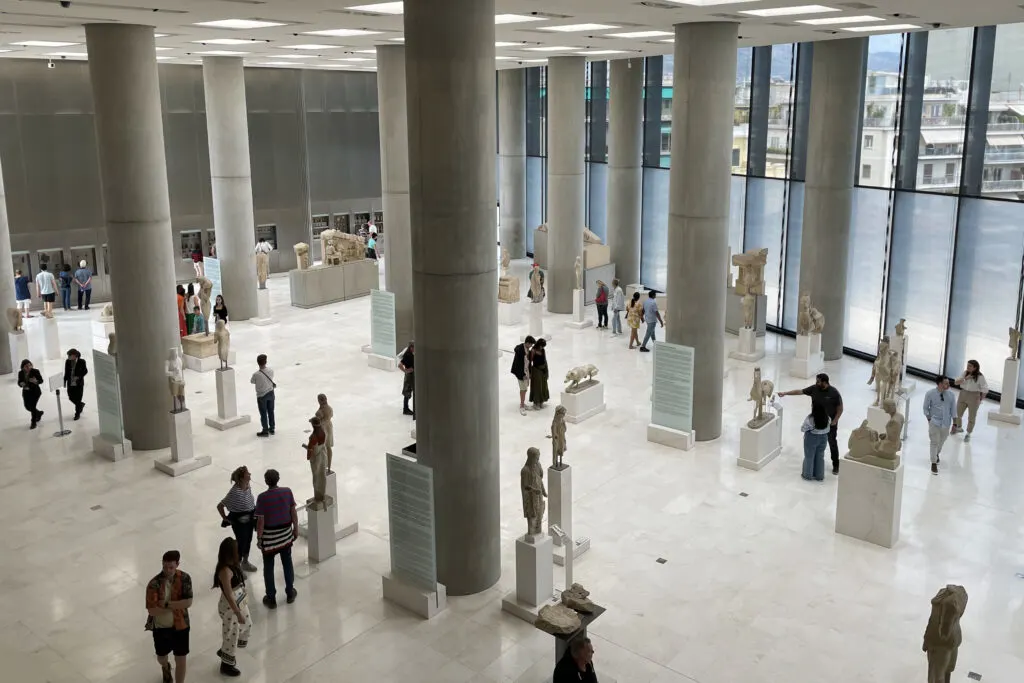
The new museum is stunning and an amazing part of it was created when underground ruins of an ancient Athenian neighborhood were discovered during the excavation phase of construction. This led to a redesign of the building. The Underground ruins are now part of the museum and the building sits above the ruins on concrete pillars. It’s exceptional.
Open: Daily except for major holidays. Hours vary by day, so check the museum website
Link: Acropolis Museum
Time needed: Allow at least 2-hours, more to really see all of it.
Location: On the southeastern slope of Acropolis Hill on Dionysiou Areopagitou Street. It’s near the south entrance to the Acropolis and next to the Akropoli Metro Station.
Getting there: Take Metro Line 2 (Red) Anthoupoli – Elliniko to Akropoli Metro Station. The Red Hop-on-hop-off tour bus also stops near the Museum.
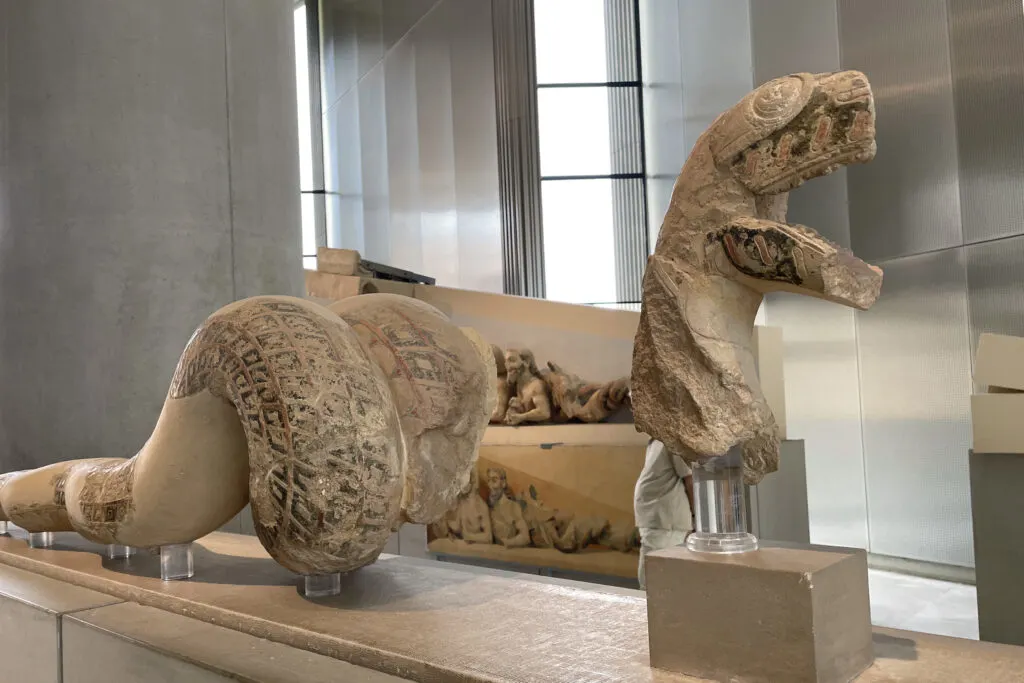
How the Acropolis Lost its Marbles
Before Greece won its independence in 1830, their ancient marble statues and artifacts were plundered by other countries. The most egregious example is the British Empire. Lord Elgin, Britain’s ambassador to Constantinople, removed statues and huge marble sections from frescos and pediments from the Parthenon, Erechtheion, and Temple of Athena Nike and shipped them to Great Britain in the early 1800s.
Part of the motivation for building the new museum was to provide a safe and proper place for the plundered marbles in order to strengthen Greece’s case for getting them back. Greece has fought for decades to get their marbles returned and some have been. In 2023, the Holy See and Vatican Museums returned three fragments. There’s hope that the British Museum will return the marbles taken by Lord Elgin.
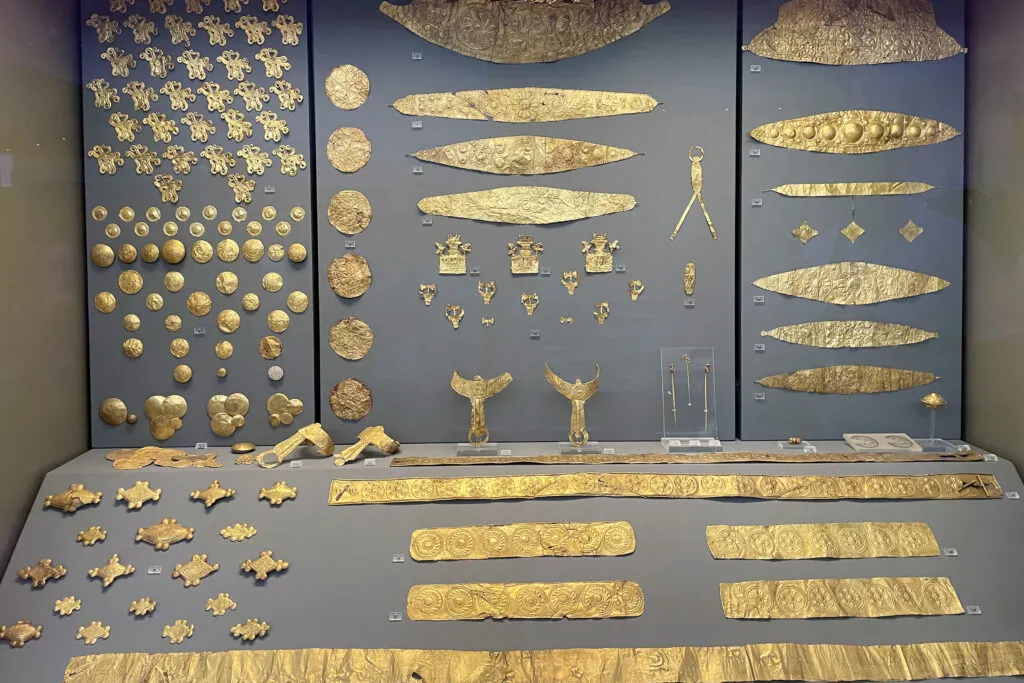
The National Archaeological Museum
This is the place to go to experience ancient Greek art and culture. The National Archaeological Museum in Athens is the largest archaeological museum in Greece and has one of the biggest and best collections of Grecian artifacts in the world. There are about 11,000 items on display. The National Archaeological Museum was founded in 1829. It moved into its current neo-classical building in 1889. The Collections include:
- Prehistoric items from the Neolithic period and Bronze Age and a great collection of gold and other treasures from the royal tombs of Mycenae (1600-1100 BC).
- Ancient Greek sculptures from 7th century BC until the 5th century AD.
- Vases and ancient Greek ceramics collections from the 11th century BC to the Roman era (31 BC to 180 AD).
- Metallurgical Works Collection with statues and figurines
Open: Daily except Easter Sunday. Hours vary by day, so check the museum website
Link: National Archaeological Museum
Time needed: If you wander through it all, it will take about 4-hours.
Location: 44, 28th of October (Patission) Street, Athens
Getting there: The Red Hop-on-hop-off tour bus stops right in front of the Museum. The nearest subway stop is Victoria (Biktṓria) Station. It’s a 550-meter walk.
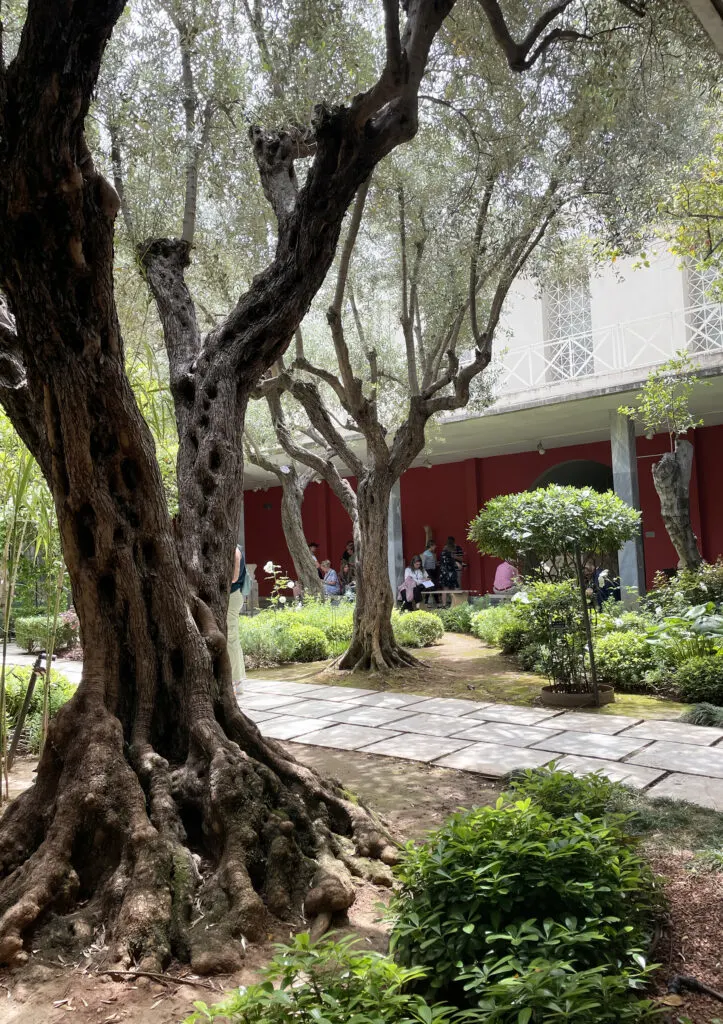
There is a small café in the museum with seating and tables around a peaceful courtyard garden. It was a great place to get food and a drink and/or sit for a bit.
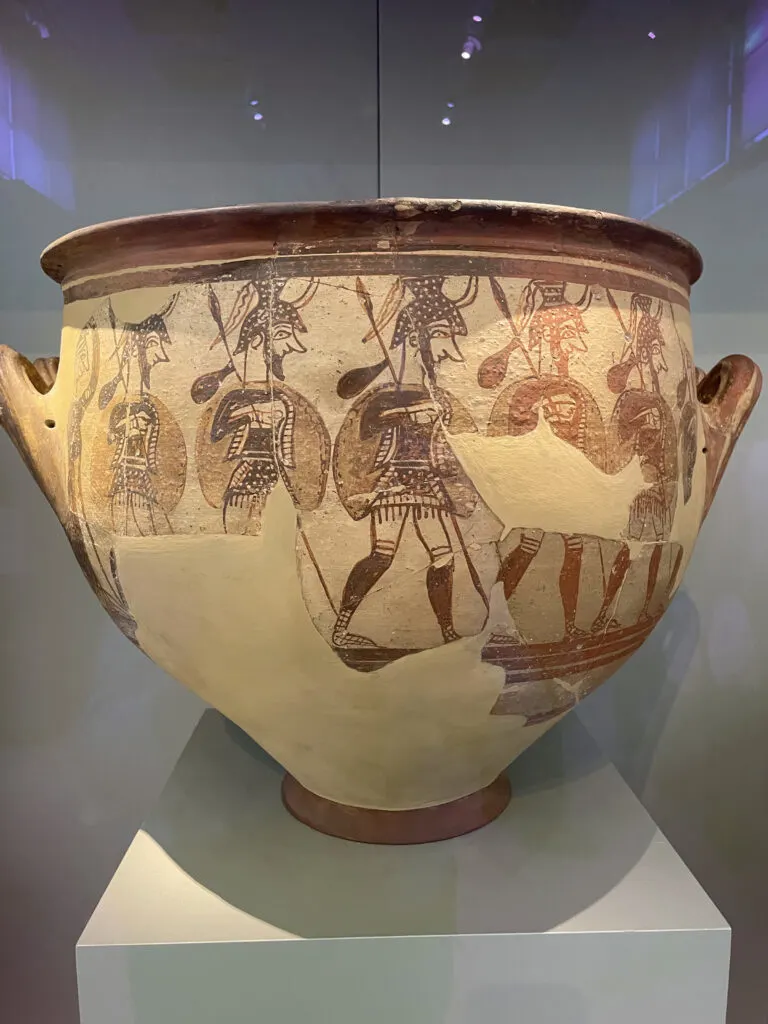
Best Time to Visit Greece
The shoulder seasons are the best time to visit Athens (April – June and September – October). The weather will be cooler and the crowds smaller at the major sights. I was there in mid-May and the weather was perfect, 21° C (70° F). Even in hot weather the museums are comfortable, so if it’s hot, visit the Acropolis and other outdoor sights as early as possible; then visit the museums in the afternoon.
Athena, Goddess of Athens
How did the city of Athens get its name? As you might guess, the Greeks have a legend. The Goddess Athena and God Poseiden both wanted to rule the city of Cecropia, and they were both so determined that it alarmed Zeus who feared there would be a fight. Zeus, who is Athena’s father, organized a contest to decide which of the two deserved to rule. Each contestant would give a gift to the city and the best gift would win.
On the day of the contest, Zeus, Athena, Poseiden and all the other gods gathered on the Acropolis. Poseiden went first. He struck the ground with his trident and created a saltwater spring (or by some accounts, he created a horse). Athena was up next. She struck the ground with her spear and created a full-grown olive tree. Of course, she easily won the contest and Cecropia was renamed Athens.
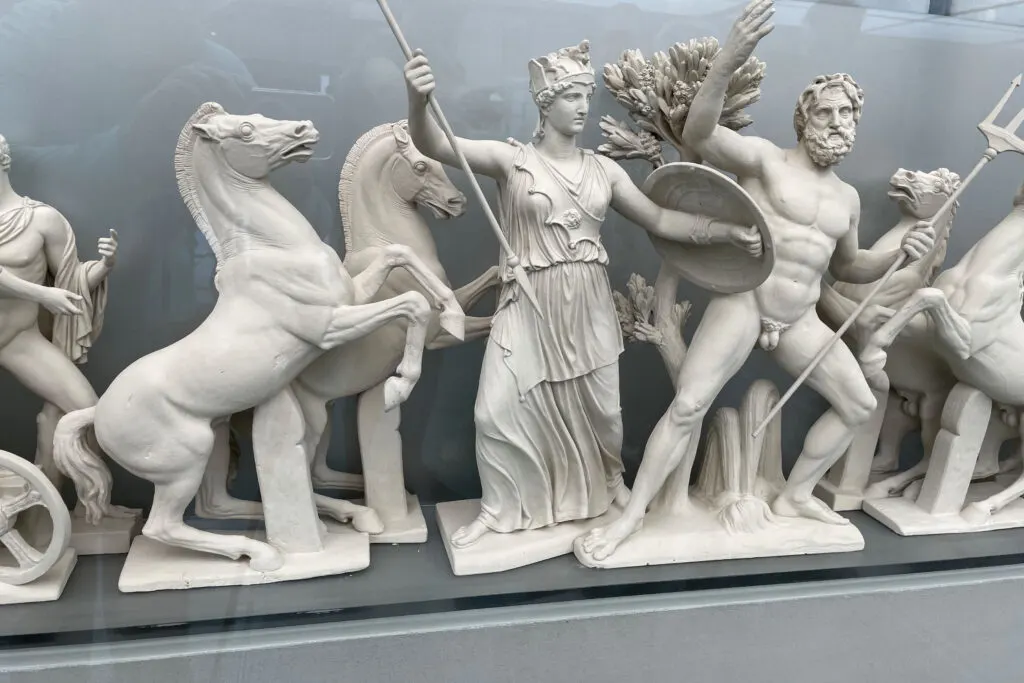
Conclusion
There is so much to do and see in Athens it’s not easy to fit everything in in just a few days, but in addition to the Acropolis and other ancient sites, vibrant neighborhoods, and wonderful food, do visit the Acropolis and National Archaeological Museums. For more on Athens, checkout these:
- Visit the Acropolis
- Changing of the Guard
- Go to the top of Lycabettus Hill for great 360° views
Author bio: Ginny Vail is a travel writer, who loves sightseeing, photography, and videography. She’s been to 45 countries across six continents and traveled by air, car, bus, train, boat, and ship. Her articles can help you discover places to go, sights to see, and details about when and how to visit them.

